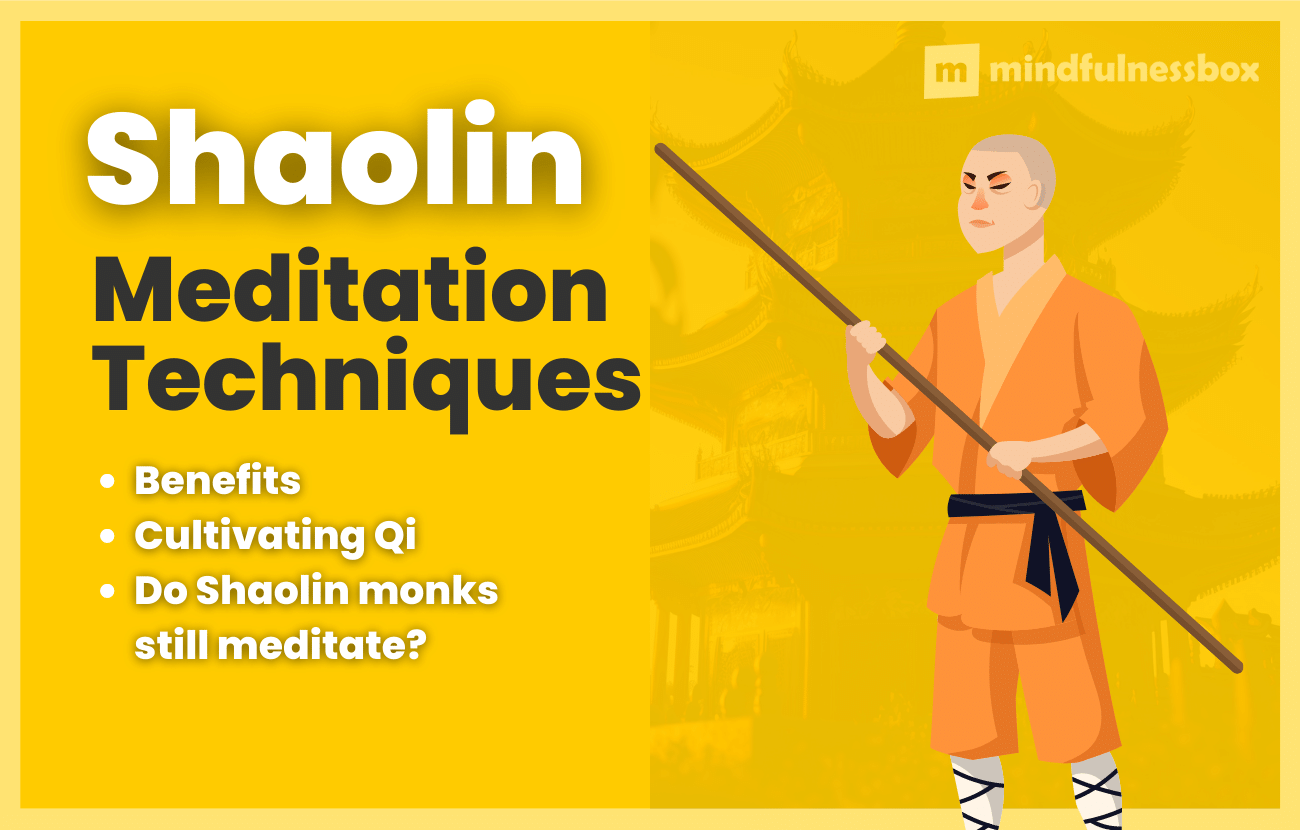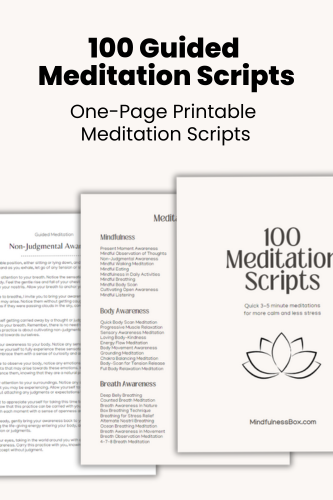Shaolin monk meditation techniques originated hundreds of years ago in China, and they show up frequently in movies and popular culture. But what exactly is Shaolin meditation? And how is it different from other meditation techniques?
Meditation never looks cooler than when it’s being done by Shaolin monks.
These 100 meditation scripts were created to help beginner and intermediate meditators practice key mindfulness concepts like self-love, forgiveness, gratitude, and inner peace.
Designed to fit into busy schedules, each meditation script lasts 3-5 minutes. Perfect for starting or closing a group meditation; for yoga, coaching, or therapy sessions; or for your personal meditation practice.
If you’ve seen a martial arts movie, you’ve probably witnessed scenes of monks who alternate between physical training through Kung Fu, and mental training through meditation.
Let’s explore what Shaolin meditation is, and what techniques look like within this practice.
What is Shaolin meditation?
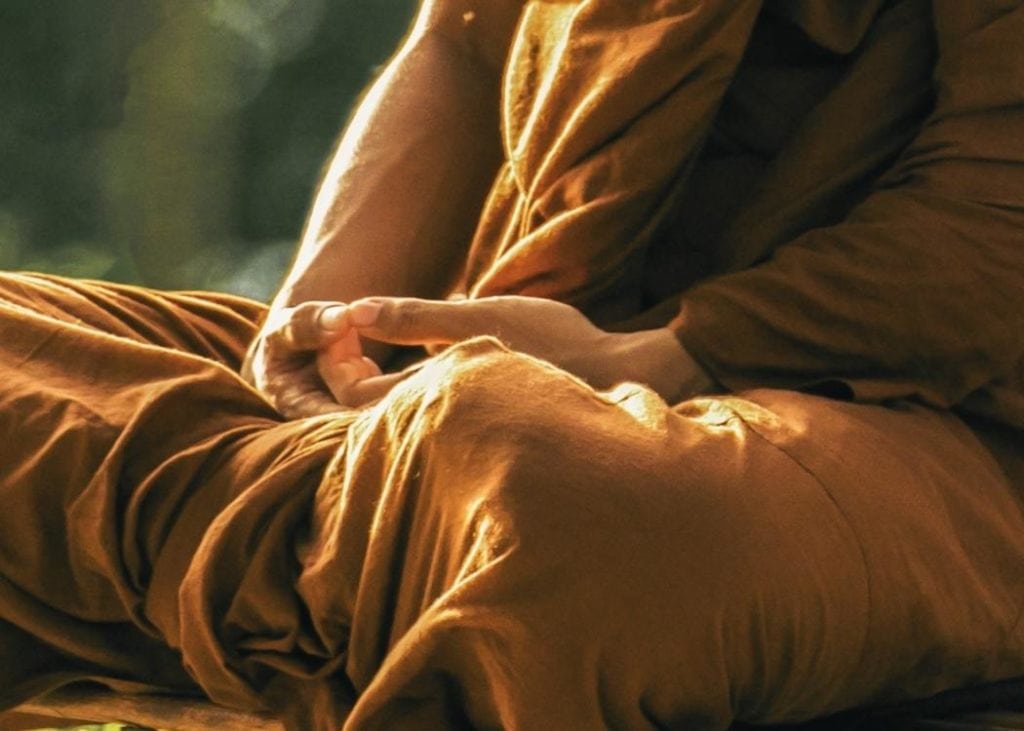
Shaolin meditation is a breath meditation intended to focus the mind, create peace and calm, and clear the body of negative energies.
Shaolin monks practice sitting and standing meditation techniques in the Chan Buddhist tradition. Shaolin meditation techniques originated over 1500 years ago.
A key focus of Shaolin meditation is to cultivate peaceful energy (or “qi”). The energy that comes through sitting meditation is thought to be peaceful energy. Through regular meditation, the Shaolin meditation process is thought to purify the energy of the body, making the body and mind healthier and reducing anxiety, stress and anger.
Standing meditation is thought to challenge the body and open it up, increasing energy, and is more commonly practiced at the start of the day.
What religion do Shaolin monks practice?
Shaolin monks practice Chan Buddhism, which originated in Shaolin Temple, in China.
According to the USA Shaolin Temple, “In Chan [Buddhism], the Temple is everywhere, and one can pray anywhere, meditate in any position, and it emphasizes the idea of personal awakening and understanding.”
Chan Buddhism migrated to Japan in the form of Zen Buddhism, which is why the meditation techniques of Shaolin monks may seem familiar to those familiar with Zen meditation.
How do Shaolin monks meditate?
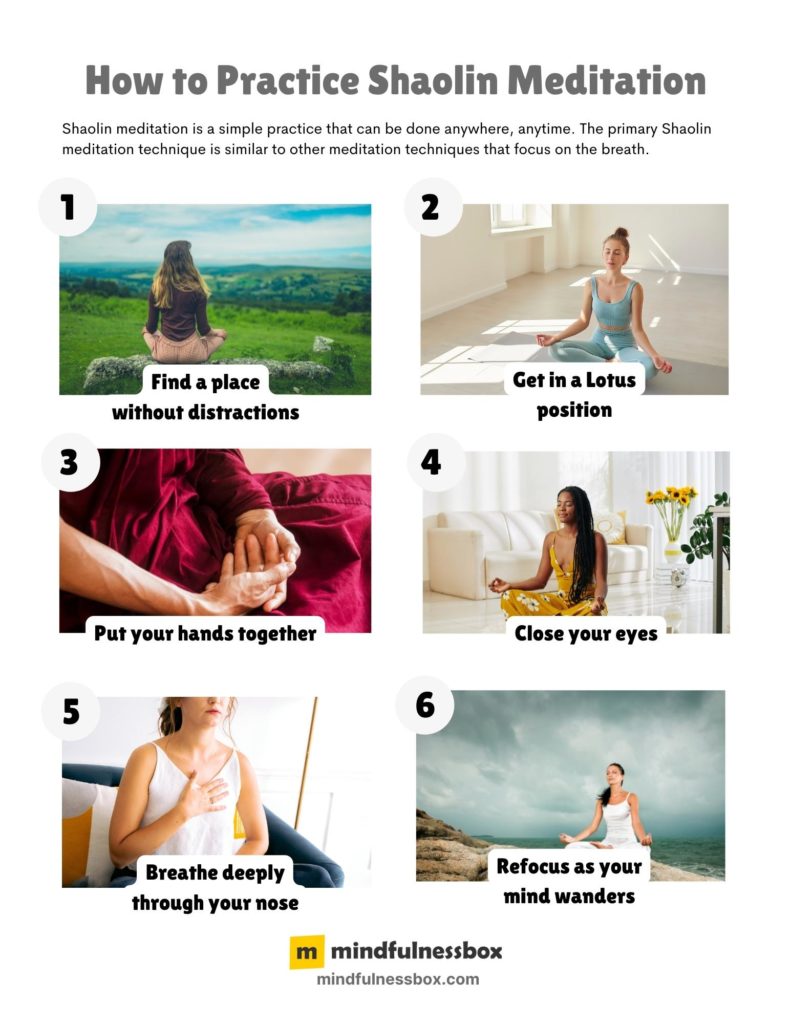
Shaolin meditation is a simple practice that can be done anywhere, anytime. The primary Shaolin meditation technique is similar to other mindfulness meditation techniques that focus on the breath.
How to meditate like a monk:
- Find a place without distractions. It should be in a clean environment. Meditating in nature is good. This is important, because part of Shaolin meditation is about releasing negative energy.
- Get in a lotus position. Or, simply cross your legs if that’s easier for you.
- Put your hands together. Rest them in the middle of your thighs, with your palms facing up. You can also rest your hands on your knees.
- Close your eyes. Relax each part of your body.
- Breathe deeply through your nose. Imagine negative energy flowing out of you as you breathe out.
- Refocus as your mind wanders. Bring your mind back to your breath as your mind wanders.
Benefits of Shaolin meditation
The ancient tradition of Shaolin meditation offers a meaningful practice for mental, emotional and physical health.
Benefits of Shaolin meditation include:
- Improved focus and concentration: The breathing techniques and single-pointed focus of Shaolin meditation can help train your mind to concentrate better and avoid distractions.
- Reduced stress and anxiety: Meditation helps relax the body and quiet the mind, releasing tension and worry. Regular practice can lower overall stress levels.
- Increased energy: Deep breathing and circulatory benefits of meditation can increase energy levels and fight fatigue.
- Emotional balance: Meditation helps develop equanimity by reducing reactivity to emotions and external events. This leads to a more calm and stable state of mind.
- Self-discipline: Committing to a regular meditation practice requires and develops strong self-discipline. This can carry over to other aspects of life.
- Enhanced self-awareness: A key aspect of Shaolin meditation is introspection and awareness of the self. This allows you to develop a deeper understanding of your mental and emotional habits.
- Promotion of overall health: Meditation has been linked to numerous physical benefits, including reduced blood pressure, heart rate, and inflammation. It may also help boost the immune system.
- Sense of spirituality: Shaolin meditation has its roots in Buddhism and can nourish a sense of spirituality through its principles of compassion and letting go.
How long do monks meditate?
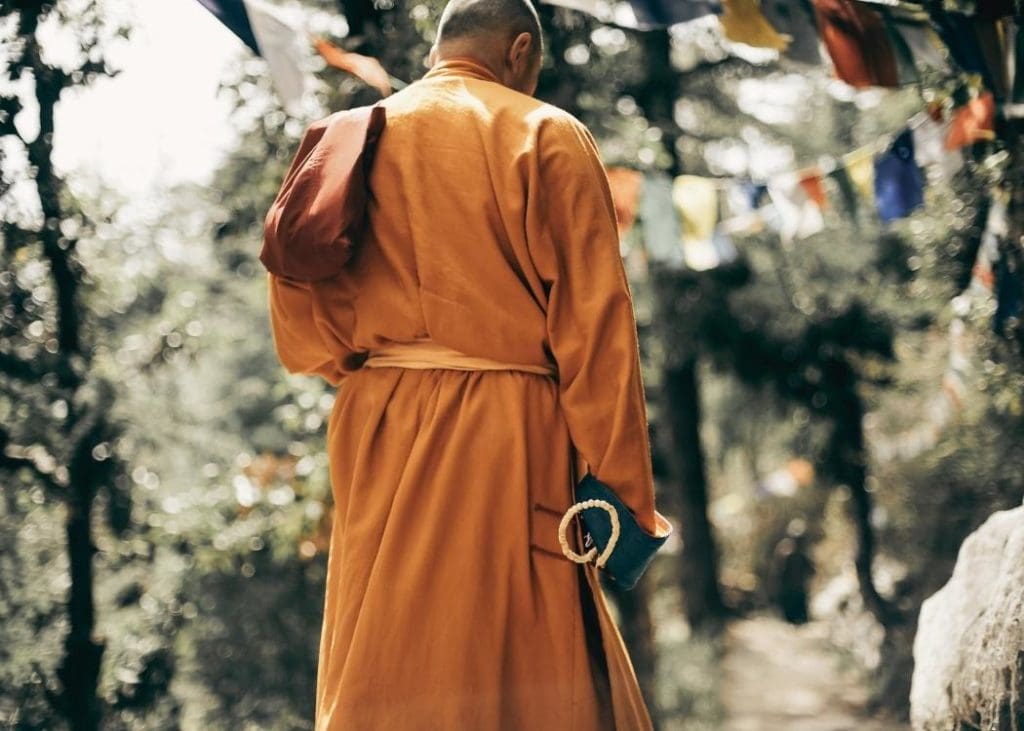
Shaolin monks meditate for about two hours a day.
Shaolin monk Sifu Wang Bo shared the schedule he followed during his years training at a temple in China.
A Shaolin monks’ day starts at 5:30 and includes chanting, training, lunch, rest, and meditation. Typically, meditation is done at night.
Shaolin monks meditate in order to achieve a state of inner peace and calm, and remove negative energies. The practice can help improve mental clarity, focus and concentration, as well as increase physical strength, stamina and flexibility.
Shaolin meditation is also used to reduce stress and anxiety, improve cardiovascular health, and reduce inflammation.
How is Shaolin monk meditation different from other meditation techniques?
Shaolin monk breathing techniques have many similarities to other breath meditation techniques. It is closest perhaps to Zen meditation, since Zen Buddhism is a descendent of Chan Buddhism.
While the practice of Shaolin meditation is similar, the Shaolin monk philosophy is different than other forms of mindfulness meditation like Vipassana.
Vipassana focuses on nonjudgment of thoughts. On the other hand, Shaolin meditation is intended to help the body remove negative energies. Sitting in Shaolin meditation is considered a way to build peace, calm, remove negative energies, and get rid of the distraction of the outer world.
Is Shaolin meditation still practiced today?
Yes. Although the Shaolin temple in China is more of a tourist attraction than an actual monastery these days, Shaolin-style meditation can be found throughout the world, especially as an addition to Kung Fu practice.
International Shaolin temples like the USA Shaolin Temple exist in cities around the world, and Kung Fu training centers teach Shaolin-style meditation, from Canada to China.
Frequently asked questions
Are Shaolin monks spiritual?
Yes. Shaolin monks practice Chan Buddhism. They use meditation to achieve self-awareness and control, and to offer mental balance.
Can you practice Shaolin mediation if you aren’t a monk?
Yes. While the original Shaolin monk meditation techniques were intended to be carried out by trained monks in temples, you can practice Shaolin meditation in your own home. While it’s not the same as having an instructor to guide you as happens with Shaolin monk training, it’s possible.
Did Bruce Lee practice Shaolin meditation?
No. Although Bruce Lee played a Shaolin monk in the movie Enter the Dragon, there is no evidence that he practiced Shaolin meditation.
Is there such a think as Kung Fu meditation?
Yes, Kung Fu involves meditation.
In fact, according to tradition, Kung Fu was developed by leaders of the Shaolin temple as a way to improve the physical and mental wellbeing of monks and to help them focus during their training.

My mindfulness practice kicked off in 2016 with a ten-day silent retreat. Since then, I’ve read dozens of books about mindfulness and completed hundreds of hours of meditation. Thinking about what makes humans happy, calm, and peaceful is endlessly fascinating to me.

